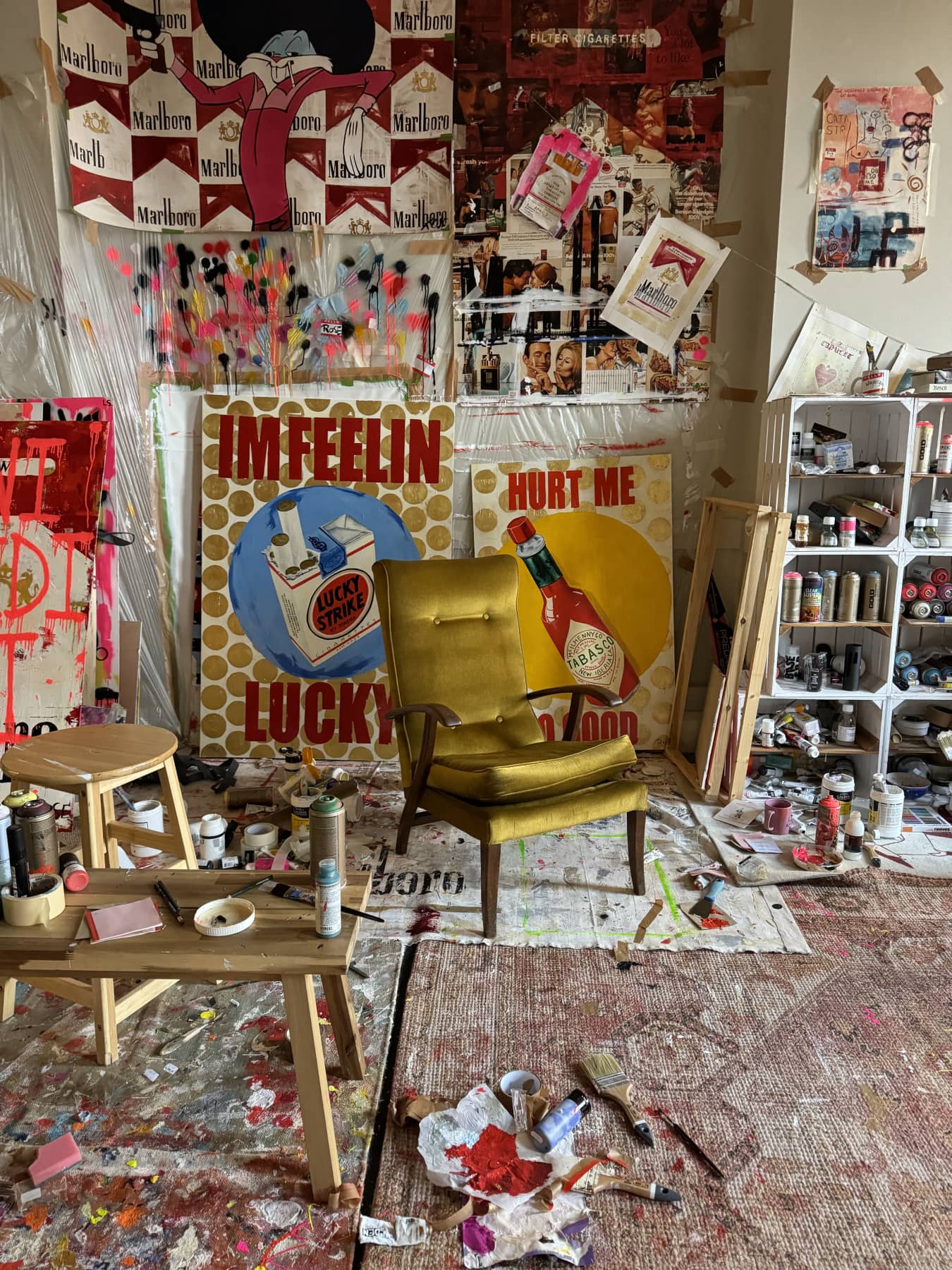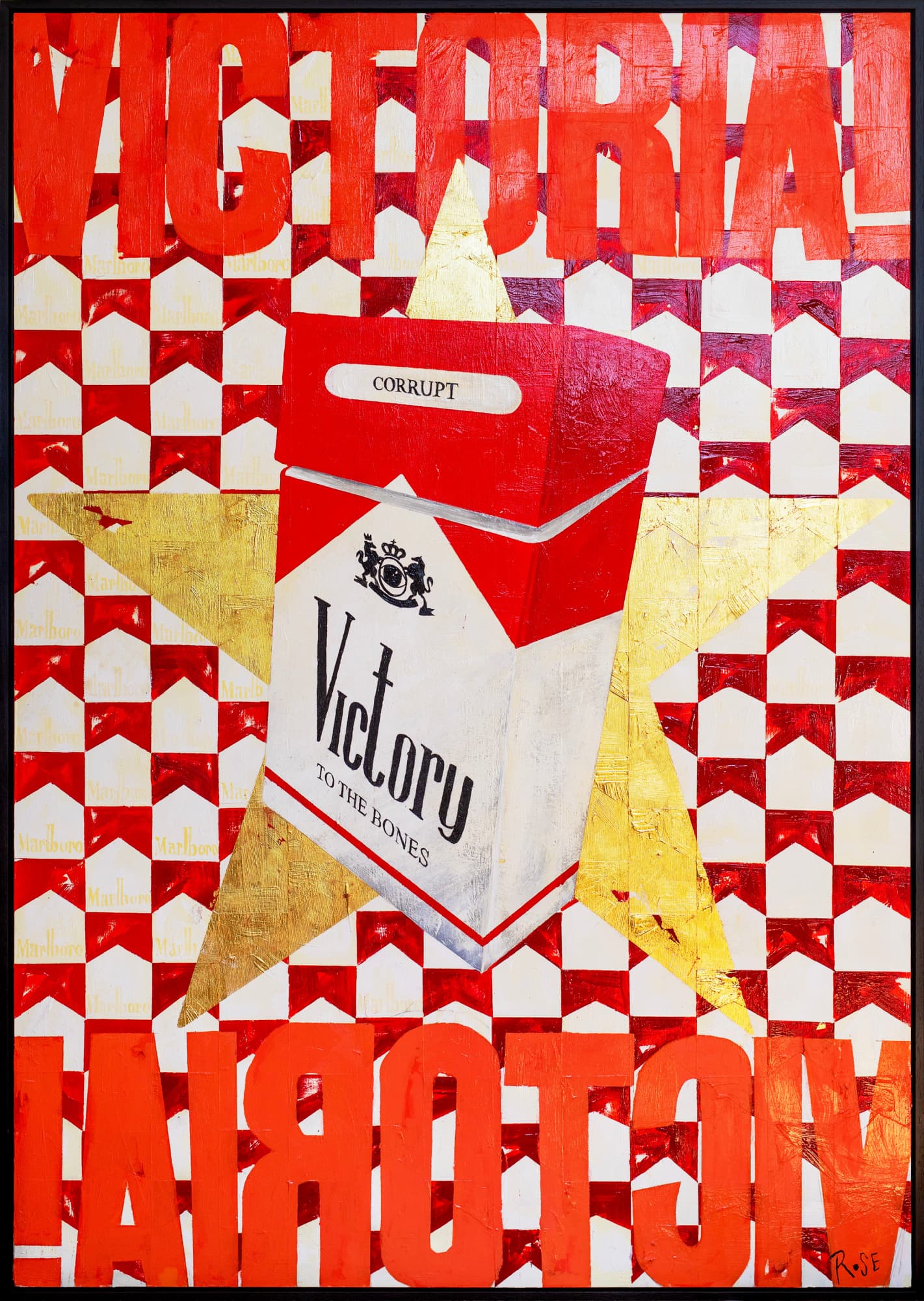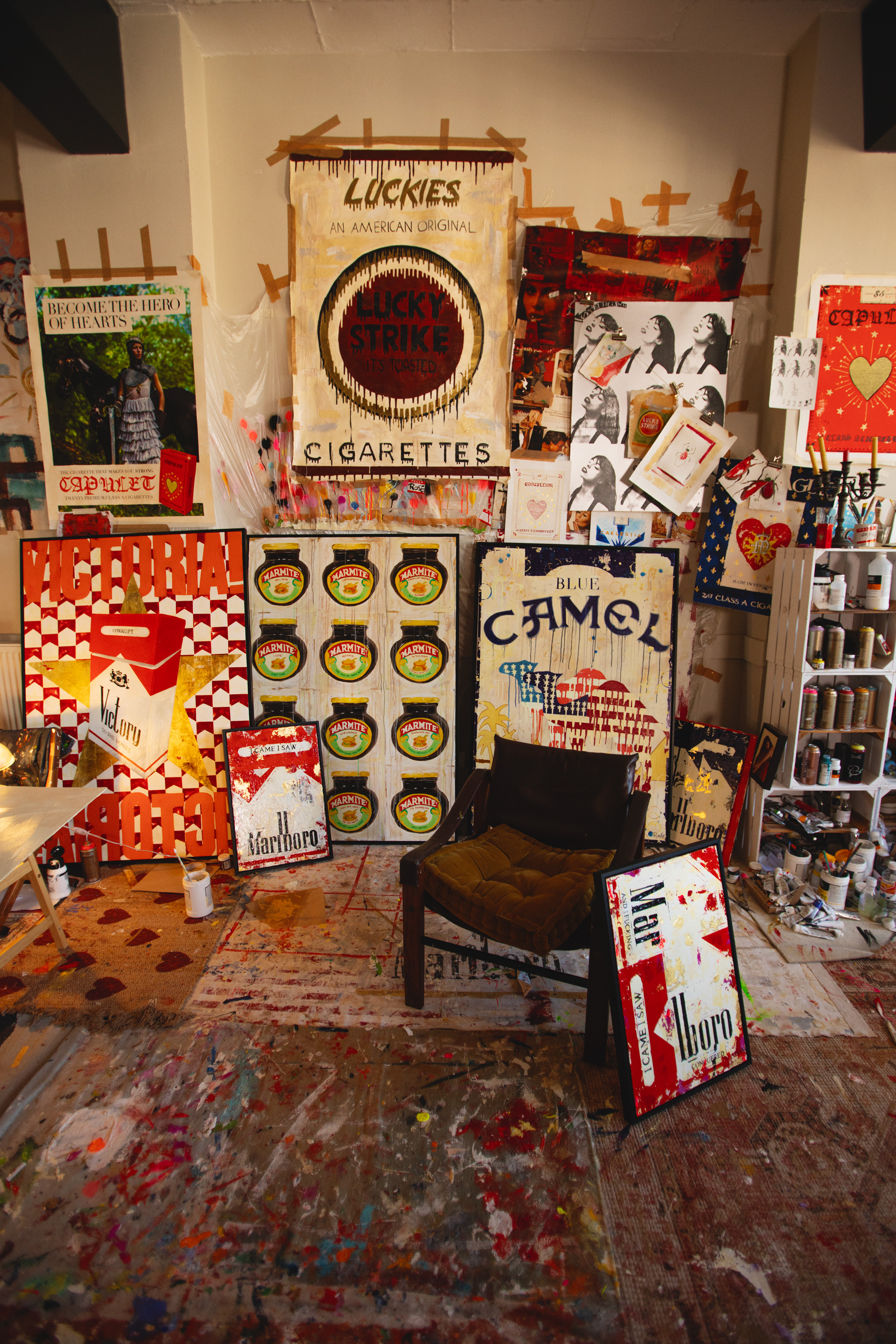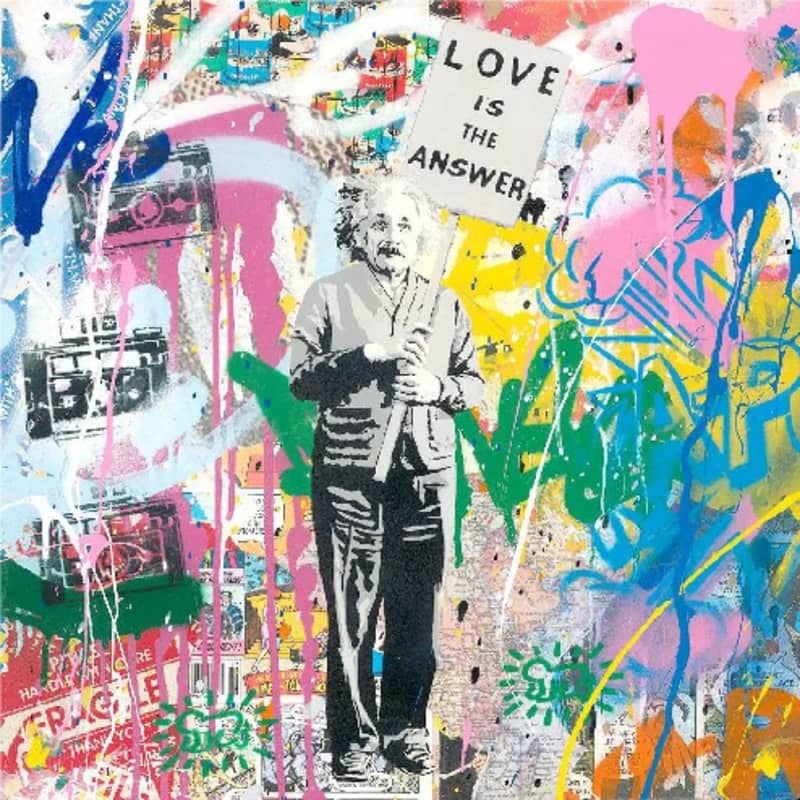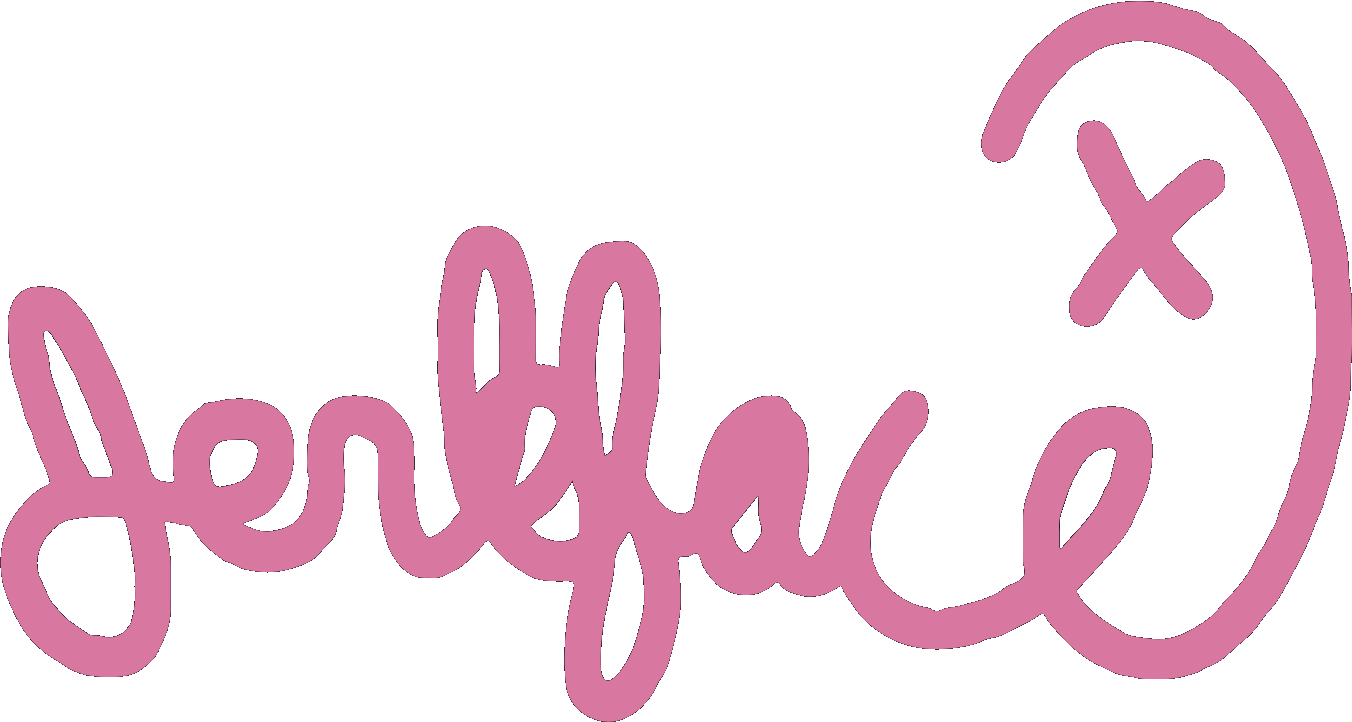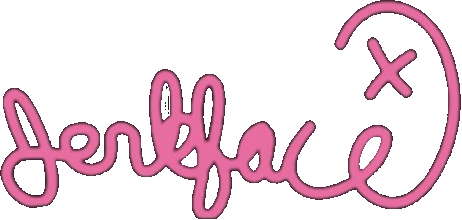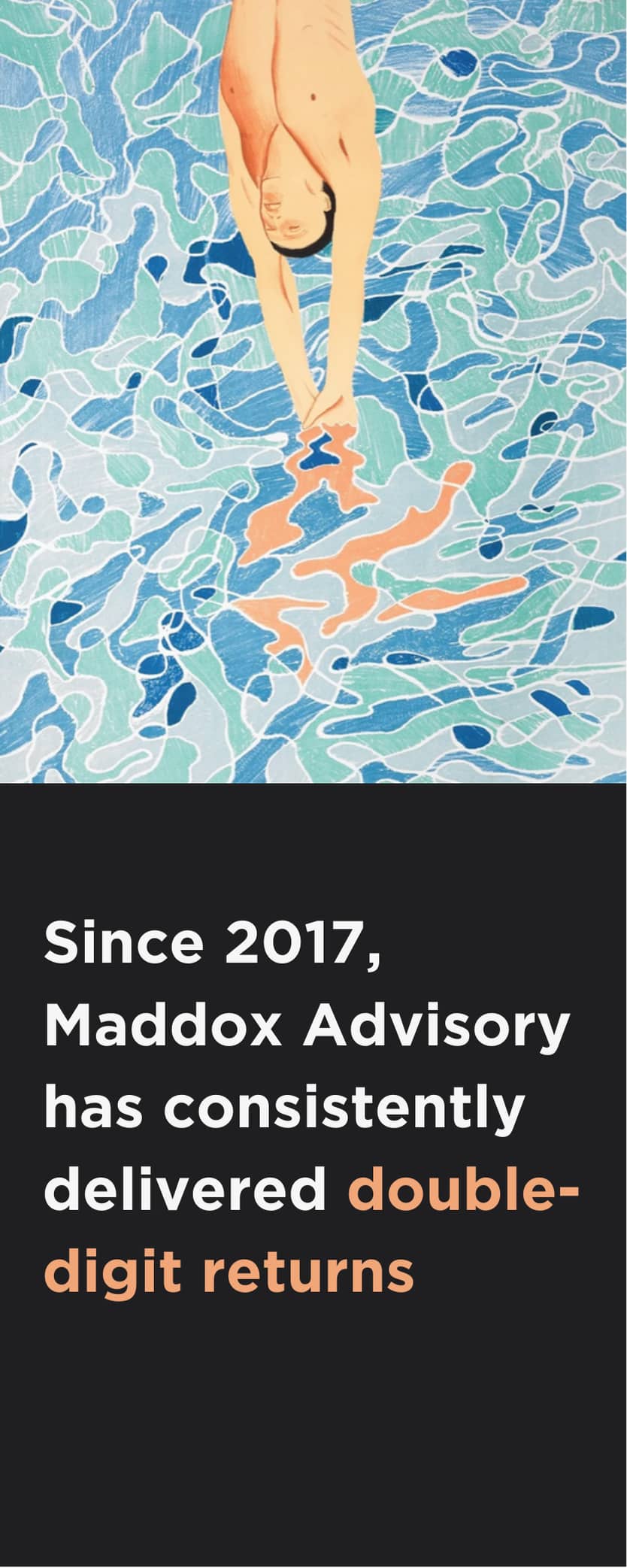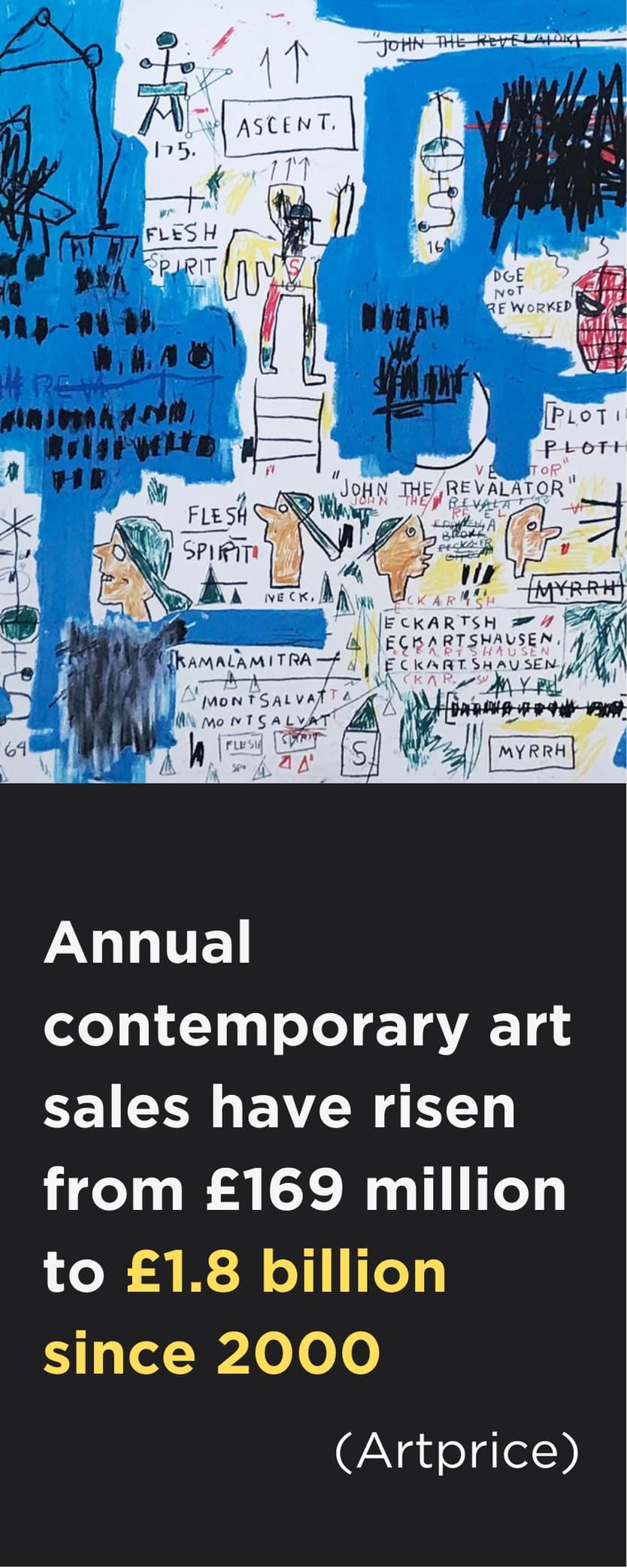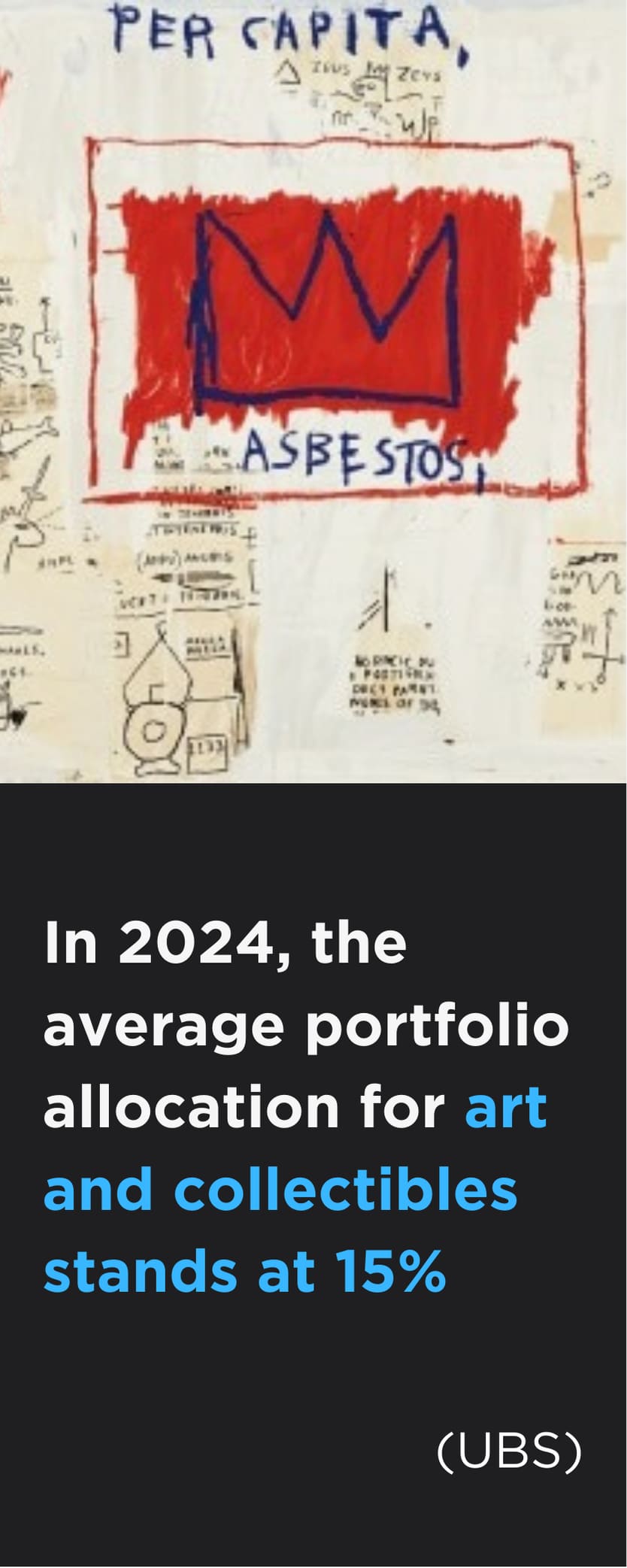In a studio tucked away in Archway, London, vibrant canvases filled with nostalgic cigarette packs, literary references, and subversive humour sit alongside their creator: artist, model, and self-confessed control freak, Charlotte Rose. “I’m Charlotte Rose. I’m an artist and... a model,” she says with a smile in Maddox Artistic Director Maeve Doyle’s Private View podcast, casually downplaying what is, in truth, a multi-hyphenate career marked by sharp social commentary and aesthetic precision.
Born in Aberdeen in 1998, Charlotte Rose graduated in 2021 with a degree in creative writing, but painting quickly became her medium of choice. “Art found me; it made sense immediately,” she explains. Entirely self-taught, she has since gone on to exhibit internationally in London, Miami and Austin, and has collaborated with global fashion brands such as Gucci and Coach. Her distinctive visual language — part modern Pop Art, part poetic pastiche — merges consumer branding, literature, and personal narrative into works that are as conceptually rich as they are visually striking.
Artist Charlotte Rose in her studio
Branding as Intimacy
“There is a strange and unique bond between us and corporations; it feels familiar, personal, and visceral,” Rose writes in her biography. That tension between comfort and critique lies at the heart of her practice. Her fascination with mid-to-late 20th century branding, particularly cigarette packaging, is as much emotional as it is aesthetic. “I think cigarette boxes are the most interesting example of branding,” she notes. “People stay very loyal to one brand their whole lives — it’s something they base their personality around.”
Paintings like I’m Feelin Lucky and Don’t Lose Your Bottle echo this sentiment, transforming familiar logos into haunting reflections on addiction, identity, and cultural memory. “You see a cigarette box, and it’s something that stays on your person — it’s in your pocket. There’s this anchor to memory,” she says, recalling her grandfather rolling cigarettes in his study.
The Literature of Luxury
Despite the visual boldness of her work, its roots lie in words. “I studied creative writing at university... I wanted to be a novelist,” Rose says, laughing. “But it turns out I wasn’t very good at writing. I think I just wanted to be a painter.” Yet literature has never left her. Her Shakespeare Tobacco Company exhibition tied together Elizabethan drama and commercial design, and her ongoing series connects 20th-century authors — Bukowski, Palahniuk, Salinger — with the branded poison of cigarette culture. “I’m doing a body of work inspired by 20th century literature, like Fight Club, Bukowski, coffee stains and cigarette rings. It just works.”
Her Macbeth paintings — such as A Dagger of the Mind — even earned a spot in a summer exhibition at the Museum of Perth, exhibited alongside a first edition of Macbeth and costumes from the Michael Fassbender adaptation. “It’s such a huge honour. I’m obsessed with history; I always listen to history podcasts when I paint,” she beams.
The artist with her Macbeth paintings
Independence as Power
Rose’s rise in the art world did not depend on institutional validation. “I never waited for galleries to ask me,” she says. Instead, she crowdfunded her first exhibition through Instagram, selling paintings directly to collectors. “I raised the money myself, hired the space, and sold the whole show. It gave me complete freedom.” This fiercely independent spirit reflects in her attitude toward both business and gender: “I’m the first woman in my family to have a career. That’s something I’m super proud of.”
Through social media, Rose has curated not only a body of work but also a persona. “Charlotte Rose is kind of a character... she’s quite sexy, but she’s not really me. I’m a bit of a bumbling idiot in real life — nerdy, insecure, and human,” she says. Yet this character has helped her connect with a broad and loyal audience. “I want to be a powerful woman for the girls who look up to me — and a sex symbol for the men who buy the work,” she adds with a cheeky grin.
Humour and Hatred: The Marmite Effect
Rose’s wit is perhaps best captured in her piece Marmite, a tongue-in-cheek response to the online commentary she receives. “I get a lot of hate on Instagram... but also a lot of love,” she says. “So I took some really nice comments, and some hilariously awful ones — like ‘knock-off Warhol garbage’ — and turned them into a painting.” She even printed a sticker with the phrase ‘Degenerate art that doesn’t enrich people’s lives’. “I think it’s hilarious. I’m so arrogant, I’m just like, ‘they’re wrong.’”
That satirical bite threads through much of her work — as does a sense of play, performance, and provocation. Whether it’s her screen print Voyeur-gasm, or her slogan-filled panels like I CAME I SAW AND I FUCKING CONQUERED, Rose balances sex, satire, and sincerity in a way that few artists dare.
Charlotte Rose artworks in her studio
The Road Ahead
Despite her success, Rose remains refreshingly grounded — and relentlessly driven. “There’s always this feeling of propulsion forward,” she says. “I need variety. I need to be doing multiple different things.” Between exhibitions, collaborations, and modelling work, her year is filled with travel, deadlines, and spontaneity. “I think I’ve got an addict’s mentality with work — I never know what’s coming next, and I kind of want that hit.”
It’s no surprise, then, that Rose has been named one of Maddox Gallery’s top Contemporary Female Artists to Watch in 2025, with her profile continuing to rise both in the UK and internationally. And collectors won’t have to wait long for the next opportunity to experience her work: Charlotte Rose will be debuting a fresh body of paintings at Maddox Gallery’s upcoming group show, opening on 22 June 2025.
For collectors, art lovers, and the simply curious, now is the perfect time to register your interest in her latest works being developed exclusively for Maddox. With Rose’s exhibitions known to sell out rapidly and her collector base growing globally, early engagement is highly recommended. Keep your eye on Maddox Gallery’s channels — and prepare to experience the next chapter in Charlotte Rose’s strikingly original visual narrative.
